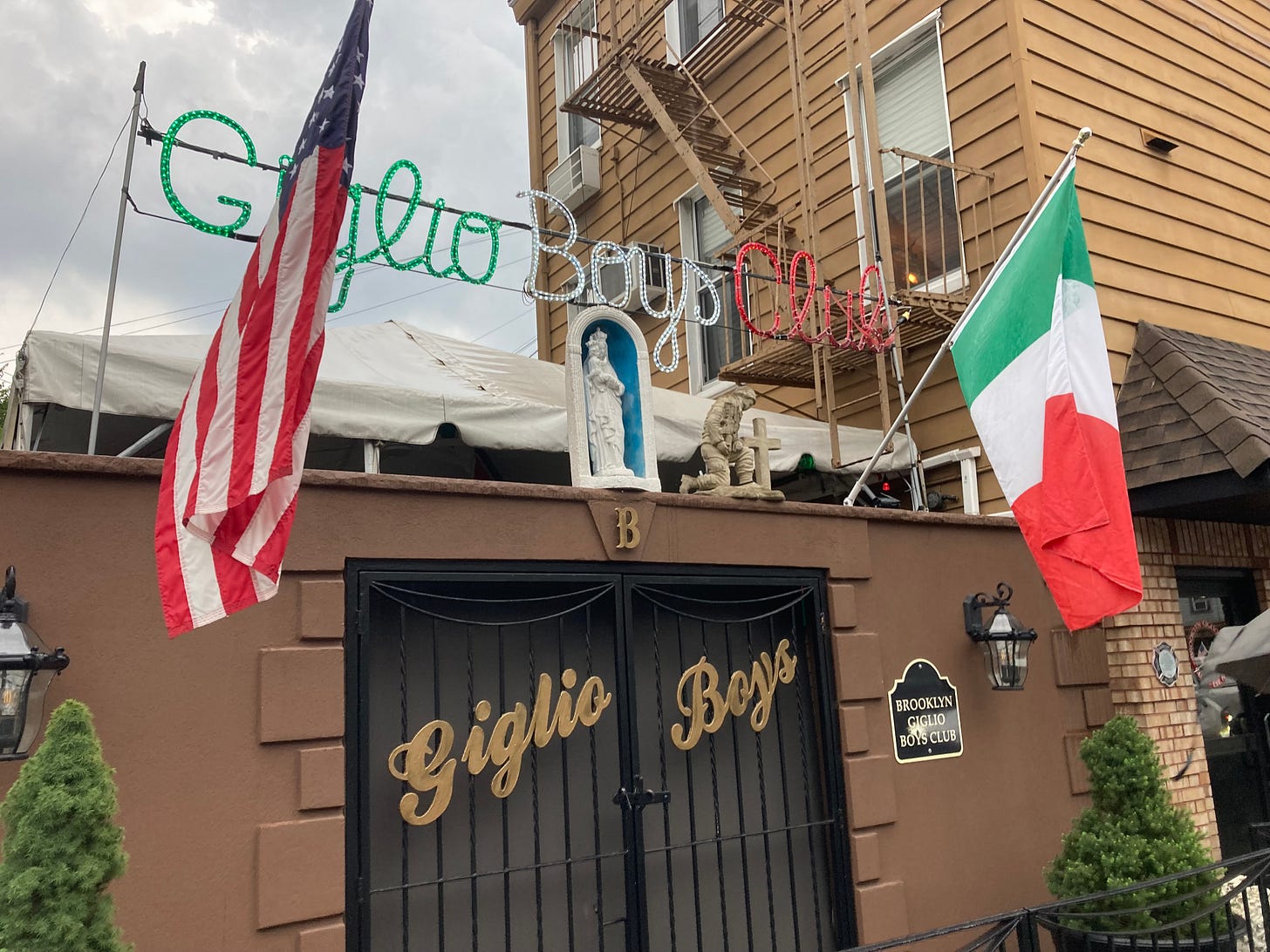Order a copy of the zine vol. ii while they’re still available and attend our launch party on 7/11.
Cracks in PoMo contributor
joined me for a live pod to discuss suburbia and ethnic identity while walking around the Ironbound section of Newark, New Jersey. Listen on YouTube, Spotify, or Apple.You should read his past articles for Cracks in PoMo, especially about his Italian family’s move from Brooklyn to NJ and his struggle to make sense of his identity, as well as his piece at
about Italian Kitsch (and subscribe).In keeping with our urban ethnic vibe, I wrote about Spike Lee’s Do The Right Thing, whose 35th anniversary we are celebrating this year, as it pertains to urban planning and ethnic identity…and gave an honorable mention to the Nickelodeon classic Hey Arnold!.
Spike Lee’s 1989 classic Do the Right Thing is known for having sparked debates over conflicting methods of addressing racial oppression, namely, Martin Luther King Jr.’s non-violent, integrationist approach and Malcom X’s separatist and–when necessary–violent one. But those more focused on the film’s moral conflict are quick to overlook its cultural, and perhaps even aesthetic, tableau of multiethnic urban enclaves, and the political implications they hold.
Indeed, the musings of pro-ethnic, pro-urbanist pundits like Michael Novak and Jane Jacobs have largely disappeared from mainstream discourse on identity and social justice more broadly. But I’d argue that our current ideological deadlocks, with their void of nuance and legitimate progress, merit revisiting the vivid picture Lee ingeniously painted 35 years ago.
We are met with Sal Frangione, the owner of Sal’s Famous Pizzeria, and his sons Pino and Vito. Sal’s Famous is a staple of the Bedford Stuyvesant neighborhood of Brooklyn that was once home to Italian-Americans, who by then had largely uprooted en masse and moved south to Bensonhurst, as the community became predominantly black, with smatterings of Puerto Ricans, Koreans, and gentrifying WASPs.
Disillusioned by the “white flight” of his Italian compatriots, Sal was determined to stay put in Bed Stuy, driven by his attachment to the business he built from scratch with “his own two hands.” Sure, some of his new black neighbors may not like him, but “most of them do.” Further, he’s fiercely proud of the fact that many of them “grew up on” his pizzas. Thus, to give up on them because of something as menial as racial tension would be an affront to the neighborhood, to which he owes his loyalty.
The racial tension in late 1980s Brooklyn ran deep, as New York City’s zoning and economic policies had worked rapidly to ravage once thriving black neighborhoods, leading to mass unemployment and the exacerbation of crime and drug abuse. The same policies were not exactly kind to working class ethnic whites who–whether due to personal choice or circumstantial limitations–had not worked their way up the socioeconomic ladder and fled to the city’s higher scale neighborhoods.
But despite economic issues, the locals in the film maintained their neighborhood’s vibrancy and conviviality. Life on the street embodied Jacobs’s vision of the “great city,” where neighbors felt a sense of responsibility to each other, largely due to the presence of numerous “eyes on the street” (think of Mother Sister who “is always watching” from her apartment window, and Da Mayor who, despite his perpetual state of intoxication, is always ready to make conversation and when necessary, save a kid from getting hit by a car), as well as residents working in the same neighborhood where they live. Even with its issues, the people care about the neighborhood–they are deeply invested in it as it is their home.
The constant social friction gives way both to moments of conflict and spontaneous joy. The streetlife is infused with an ever-present soundtrack: salsa blasting from Steve’s boombox, Public Enemy from Radio Raheem’s, Sinatra from the pizzeria’s speakers, or the mix of classic R&B from Mister Señor Love Daddy’s (Samuel L. Jackson) radio booth down the block. The residents break out in song and dance on the street, or on hot days will prance through the water bursting forth from an opened fire hydrant.
The mix of strongly rooted ethnic groups plays a crucial role in the neighborhood's tension–which is pregnant with both causticity and vivacity, weaving a social fabric whose diversity is rich and multifaceted…unlike the rootless, elitist version of “diversity” championed by the “social justice warriors” of our day. The irons within this burning oven of proletarian diversity can forge either weapons for violence or tools for building a meaningful community–which distinguishes itself from the dull coals of identitarian diversity discourse which only forges monolithic and barren forms of community
Continue reading at RealClear.





